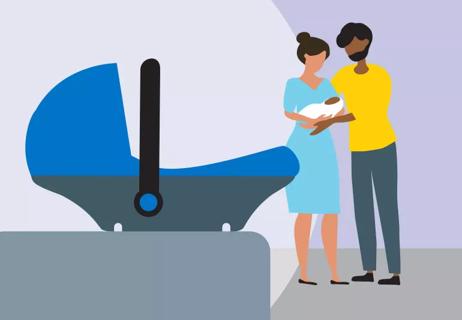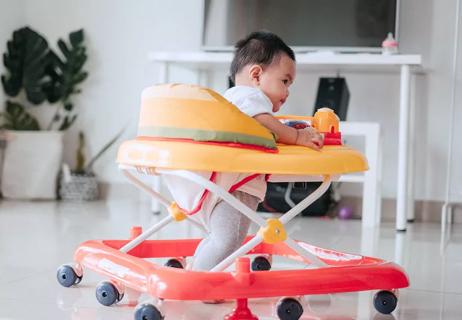Bath toys with little holes in the bottom are more likely to retain moisture and start to mold

You squeeze your child’s favorite rubber ducky, and it emits a glob of grayish gunk. You catch your baby chewing on a teething toy speckled with little green flecks. Oh, no … is that mold?
Advertisement
Cleveland Clinic is a non-profit academic medical center. Advertising on our site helps support our mission. We do not endorse non-Cleveland Clinic products or services. Policy
It’s just a fact of life (and parenting): Baby toys end up getting wet, whether it’s a plastic bath-time buddy or a saliva-covered teething ring. And where there’s moisture, there’s probably always a possibility for mold. But does it pose a real health danger?
We asked pediatrician Kimberly Giuliano, MD, about the risks of mold on kids’ toys, along with what you can do about it and how you can prevent it.
Mold is a fungus that reproduces through mold spores, and it thrives in places that are damp, warm and humid — including, but certainly not limited to, kids’ toys.
“Trace levels of mold are all around our environment,” Dr. Giuliano says. “It doesn’t only come from toys like these.”
Mold also loves showers, basements, wet carpets…
Sometimes, you can see the mold on the outside of a toy, either growing in a clump or in little dark spots — sort of like you’d see on food that’s gone bad.
But other times, mold is harder to spot, like when it’s inside a toy.
“Mold is likely to grow anywhere there is moisture and darkness,” Dr. Giuliano states. So, no matter how bright and colorful a toy is, anything with nooks, crannies and hollow centers is a potential hotbed for mold.
Bath toys and any other hollow toys are at particular risk here, as they often have small holes in the bottom that allow moisture in but don’t easily let it out. As mold starts to fester inside, you and your child are blissfully oblivious to the small ecosystem unfolding within.
Advertisement
So, you’ve spotted mold on your kiddo’s favorite teething ring. Now what?
If it’s just a small spot of mold, a simple wipe-down will do. “It’s best to wipe them with warm soapy water or a little bit of bleach,” Dr. Giuliano recommends.
But if you’re dealing with more than a little bit of mold, head for the trash can instead of trying to get the toy clean.
Look, we get it: No one wants to throw away a perfectly good toy if they can help it. And the internet is full of advice about cleaning moldy toys with vinegar and other concoctions. But for the sake of your child’s health, particularly moldy toys should be chucked instead of salvaged.
“If there are obvious signs of a problem, like if you can see it covered in mold or if a toy smells foul, it’s best to just throw it away,” Dr. Giuliano advises.
Old toys pose a risk, too, as they’ve had more time to accumulate mold — especially if they’re stored someplace damp, like in the basement or garage. If a toy has been put into storage for a while and is a couple of years old, it’s probably worth replacing before passing it down to younger siblings.
Finding nasty-looking mold on your baby’s toy can be alarming, worrisome and, yes, super gross. But there’s good news: Dr. Giuliano says that for the most part, mold on toys appears only in small traces and doesn’t pose a major health risk to kids.
“In general, these types of mold aren’t concerning for a healthy child,” she continues. “A normal immune system is going to fight off this mold just fine.”
But some children are at a higher risk for health issues. Kids with a mold allergy may start experiencing symptoms like coughing, wheezing or itchy eyes, and mold can also trigger asthma symptoms.
Plus, Dr. Giuliano warns, “If your child is at higher risk for infections, you’ll also need to be more vigilant.” Keep toys clean and keep a close eye out for the possibility of mold if your little one:
The drier a toy stays, the less likely it is to grow mold, so try to air out bath toys and saliva-covered teething toys — and clean them on a regular basis.
“Again, warm soapy water is best,” Dr. Giuliano says. “Just be sure to avoid the area around that hole where moisture can potentially get in and grow mold.”
Some types of toys require special care, so always follow the manufacturer’s advice for cleaning them. You can check a toy’s packaging for care instructions or, if you’ve already thrown away the packaging, check the manufacturer’s website for guidance.
Advertisement
Buying new toys? These tips can help you pick out the kinds that are least likely to accumulate mold:
And next time you drain the tub, give your child’s bath toys a little bit of extra attention before you put them away. Dr. Giuliano reiterates: “Whenever possible, try to dry out any toys that continually get wet.”
Advertisement
Learn more about our editorial process.
Advertisement

Use these precautions to guard against tragedy

Babies born preterm may need special precautions to ride safely in a car

Keep your child rear-facing as long and possible, and ensure proper fit and installation

Get the answer along with tips for safe installation

Thousands of head and neck injuries occur every year

How to know when your child’s ready to face front, switch to a booster seat and more

How to keep your little one warm and safe in the car

How to avoid high chair accidents

Babies can get congested easily, but you can calm their cough by keeping them hydrated, using nasal drops and running a humidifier

Weight loss may cause loose, sagging skin and muscle loss to your rear

Several conditions, like vitiligo and fungal infection, can cause a loss of pigmentation, leading to white spots or patches on your skin